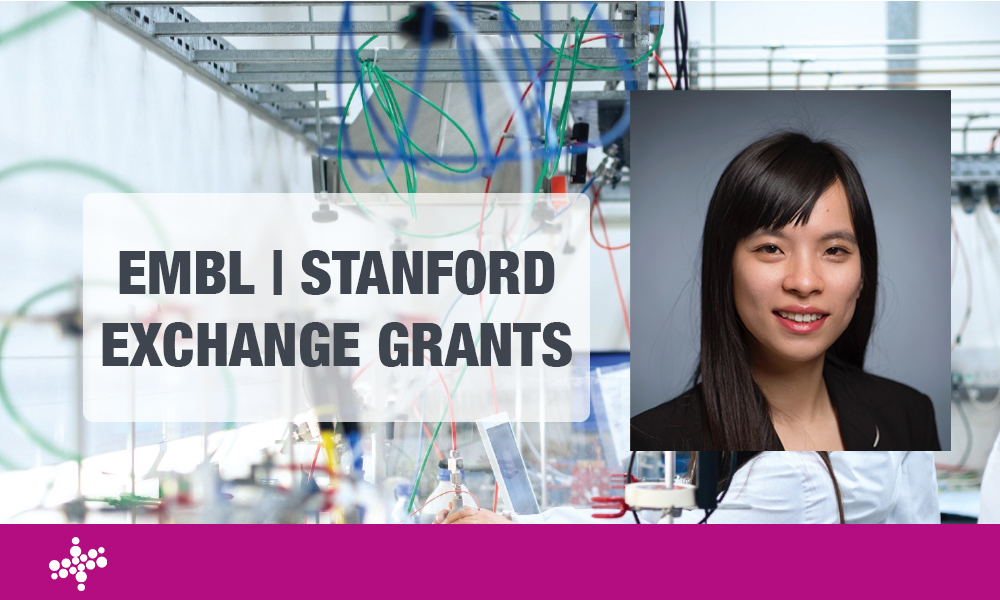Journey of Discovery: Exploring International Research Collaboration

Yuqi Tan, a postdoc in in Garry Nolan’s at Stanford, spent three months in Anna Kreshuk’s lab at EMBL working on her project, “Deep Learning-Powered Study of 3D Tissue Structures and Molecular Cues in Breast Cancer Initiation.” Her visit, supported by one of our Exchange Grants, provided valuable opportunities for collaboration.
Yuqi, tell us about your project, how does it benefit from input from Stanford and EMBL?
My project aims to create a comprehensive 3D structural and molecular atlas and develop companion computational tools to understand breast cancer initiation. In the Nolan lab at Stanford, I am creating the molecular atlas using the spatial-proteomic technique (CODEX) developed in the Nolan lab. This facilitates our understanding the tissue microenvironment surrounding a variety of ductal structures.
To capture the 3D ductal morphology, we use confocal microscopy coupled with tissue-clearing technique to image human patient samples. However, due to the highly irregular shapes of the ducts, standard segmentation tools fail to capture the individual ducts and I need to develop new tools to segment and cluster these ducts. My EMBL exchange at the Kreshuk’s lab precisely offers me the possibility to 1) learn hand-on experience in 3D segmentation and classification, 2) facilitate establishing close collaborations with experts in 3D segmentation and classification, and 3) connect me with the broader research community in Europe.
After returning from my exchange at EMBL, I am working on fine-tuning the 3D segmentation models developed in the Kreshuk lab and integrating both the molecular and structural information towards predicting disease progression.
What are some other benefits of being able to visit EMBL?
“One of the major additional benefits of visiting EMBL is the opportunity to utilize its extensive resources, such as the Bioimaging Analysis Service. This access helped advancing some of my other projects by leveraging their technical expertise on similar research, which was a delightful surprise.”
Moreover, sharing my expertise and experiences in multiplexed imaging with other group leaders and trainees fostered new collaborations. Lastly, my curiosity about conducting research at EMBL, one of Europe’s premier life sciences research institutes, has been thoroughly satisfied through this experience.
What was your favorite part of the trip?
“The best part of the trip was undoubtedly meeting researchers who have thought deeply about questions I am also passionate about and learning from their experiences.”
I also greatly enjoyed the lab meetings in Kreshuk’s group, where I received detailed feedback on model architecture, performance, and parameter tuning from a computer science perspective. Additionally, I indulged in small guilty pleasures, such as having a reasonably priced cappuccino from the cafeteria every morning and enjoying lunch at one of the best canteens. I also had the chance to travel around Europe on weekends, which was a fantastic experience.
Did your research visit to EMBL influence you and contribute to your personal development?
My exchange at EMBL reaffirmed my interest in potentially moving to Europe for an independent position. This opportunity also allowed me to scout institutes and universities that have the facilities to best support my research agenda. Additionally, being exposed to work styles of different institutes and seeing different opportunities available helps to shape my research and mentor vision. On a more personal note, experiencing different cultures through working and living in a foreign country has given me a fresh perspective and made me appreciate my surroundings even more.
You want to read more about Yuqi’s project? Continue reading here:
Project: Deep Learning-Powered Study of 3D Tissue Structures and Molecular Cues in Breast Cancer Initiation